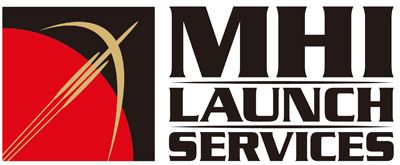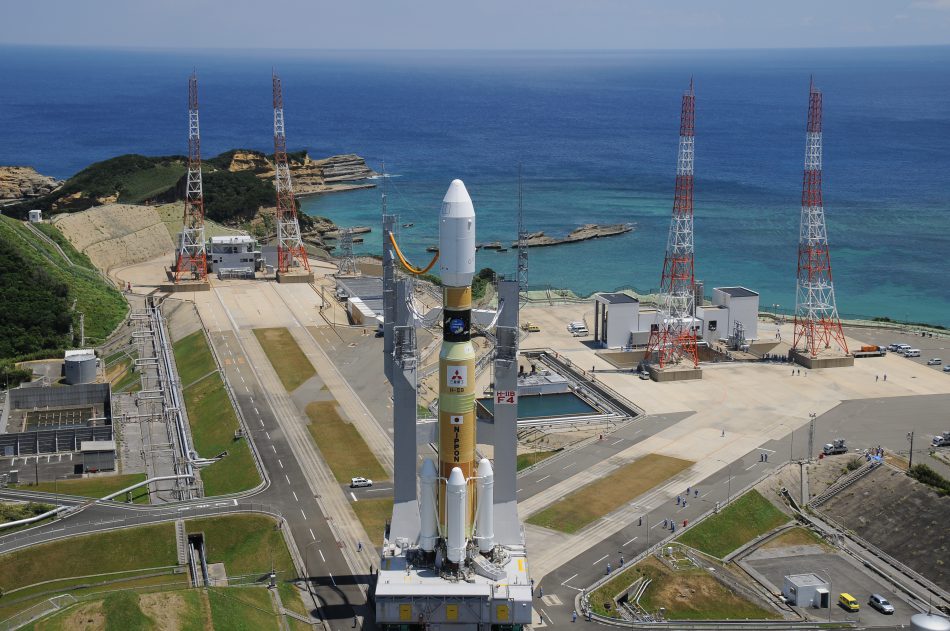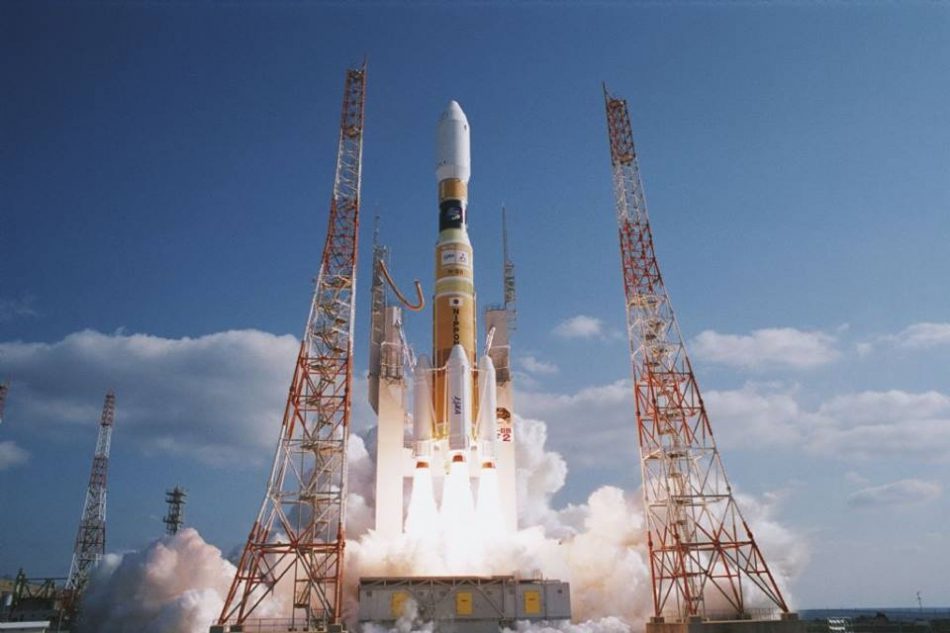
Back to selection

Supplier
MHI Launch Services
Mitsubishi Heavy Industries
2-3, Marunouchi 3-chome
Chiyoda-ku
Tokyo, 100-8332
Japan
MHI Launch Services, Ltd. a subsidiary of Mitsubishi Heavy Industries (MHI), is the launch provider for space crafts and performed a main role in Japanese space programs for about half century.
MHI, headquartered in Tokyo, Japan, is one of the world’s leading heavy machinery manufacturers, with consolidated sales of 3,203 billion yen (28 Billion USD) in 2007. MHI produces approximately 700 products thru various product lines and services including shipbuilding, power plants, chemical plants, environmental equipment, steel structures, industrial and general machinery, aircraft, air-conditioning systems and space rocketry.
Japan’s current launch vehicle, the H-IIA, was developed by MHI under contract from Japan Aerospace Exploration Agency (JAXA). The new H-IIB launch vehicle is being developed as a partnership between JAXA and MHI. JAXA is responsible for the basic configuration, the first-stage firing tests of the clustering engines, and the total vehicle system verification tests at the launch site. Meanwhile, MHI is responsible for the detailed design and manufacturing of the flight test vehicle and the ground verification tests. The H-IIB will be the first Japanese launch vehicle to use clustered engines.


Company History
In 2007 MHI took over H-IIA launch operations from JAXA and started its own commercial launch services. Prior to that, MHI had already been involved in 11 successful H-IIA rocket launches with JAXA. At present, the launch service uses only the H-IIA launch vehicle. Unlike the H-IIA, the H-IIB is capable of launching dual 2- to 4-tonne geostationary satellites at one time, which was a great cost saving over two separate H-IIA flights. This would help reduce the overall cost of satellite projects, which made the H-IIB a strong commercial asset.
The first H-IIA was successfully launched on August 29th 2001, followed by a string of successes. The sixth launch on November 29th in 2003, intended to launch two IGS reconnaissance satellites, failed. JAXA announced that launches would resume in 2005, and the first successful flight took place on February 26th with the launch of weather and aviation control satellite, the MTSAT-1R, built by Space Systems/Loral (SS/L) for the Japan Meteorological Agency (JMA).
The H-IIB was the first joint development project between JAXA and MHI when it was shipped to the Tanegashima Space Center in early 2009. JAXA did the research and development and was responsible for the basic configuration while MHI was entrusted with the design, development and manufacturing.
In 2010, NASA’s space shuttle was retired. MHI felt the great sense of responsibility to complete the HTV as an essential vehicle to transport materials to the International Space Station (ISS). Pairing up with JAXA was making the first launch of the H-IIB and the HTV a success. The H-IIB had increased launch capabilities, and was aderivative of the H-IIA family. H-IIB uses two LE-7A engines in its first stage, as opposed to one in H-IIA. The first H-IIB was successfully launched on September 10th, 2009.
The first launch for a mission beyond Earth orbit was on September 14th, 2007 for the SELENE moon mission. The first foreign payload on the H-IIA was the Australian FedSat-1, a 50kgs weighing Australian scientific micro satellite, in 2002. As of March 2015, 27th out of 28 launches were successful.
For the 29th flight on November 24th, 2015, an H-IIA with an upgraded second stage launched the Telesat’ Telstar-12V satellite, the first commercial primary payload for a Japanese launch vehicle. The Telstar-12V launch took place at the Tanegashima Space Center and was a key event for MHI, given that Telesat was one of the ‘Big Four’ FSS operators. MHI aims to bring the cost of its launch services down to compete with new launch vehicles such as the Falcon 9 of SpaceX and Ariane 6 of Arianespace. These plans accelerated in 2020 and the company has planned the first launch of the H3 rocket in 2022.
Mitsubishi Heavy Industries has played an important role in the development and manufacturing of Japanese space transportation systems from early on. In 2007 MHI started providing launch services with their H-IIA launch vehicle for both commercial and government missions and in 2013, the H-IIB was entered into commercial satellite launch services.
On March 6th, 2023 JAXA’s new launch vehicle H3 lifted off from Tanegashima Space Center. The 57m (187ft) tall rocket suffered from a engine failure and shortly after the launch, the Mission Control Center issued a destruct command to the rocket, bringing its first test flight to an early end.
In June 2024 the H3B rocket successful launched JAXA’s Advanced Land Observing Satellite-4 (ALOS-4, also known as Daichi-4), to replace the ALOS-2/Daichi-2 satellite, also launched in 2024. ALOS-4 will increase the observation frequency of ground activity due to volcanic activity or an earthquake. Weather and disaster agencies can detect unusual activity or landslides in a more timely manner. The satellite will also be used to monitor deforestation and infrastructure.
Keydates
1971: MHI takes part in the development of the N-I launch vehicle.
1975: Launch of the first N-I launch vehicle (Payload: Engineering test satellite type I “Kiku No. 1” (ETS-I)).
1976: N-II launch vehicle development commences
1981: Launch of the first N-II launch vehicle with payload of the Engineering test satellite IV, ‘Kiku No.3 (ETS-IV). Also, N-II launch vehicle operations commence (Nos. 1 to 8) and H-I launch vehicle development commences.
1986: Launch of the first H-I launch vehicle with payload of the Experimental geodetic satellite “Ajisai” (EGS)). Also, H-I launch vehicle operations commence (Nos. 1 to 9) and H-II launch vehicle development commences
1992: H-I launch vehicle operations end (Nos. 1 to 9).
1994: Launch of the first experimental model of the H-II launch vehicle with payload; Orbital re-entry experimental vehicle “Ryusei” (OREX)), H-II launch vehicle operations commence (Nos. 1 to 8).
1996: H-IIA launch vehicle development commences.
1999: H-II launch vehicle operations end (Nos. 1 to 6, and No. 8).
2001: Launch of first experimental model of the H-IIA launch vehicle with payload: Payload 2 type “VEP-2” for H-IIA performance confirmation).
2002: MHI was appointed as the prime contractor for the launch services of H-IIA launch vehicle by the Japanese government.
2003: H-IIB launch vehicle development commences; MHI appointed as the primary company.
2007: MHI begins offering H-IIA Launch Services, successful launch of “Kaguya” (SELENE) aboard H-IIA Flight No. 13.
2013: Start of the H-IIB Launch Services, successful launch of “KOUNOTORI4” (HTV4) aboard H-IIB Flight No. 4.
2014: Successful launch of Global Precipitation Measurement (GPM) aboard H-IIA Flight No.23. MHI was appointed as the prime contractor for both the launch services and the development of Japan’s next generation launch vehicle by the Japanese government. Successful launch of Advanced Land Observing Satellite-2 (ALOS-2) aboard H-IIA Flight No.24 and successful launch of Geostationary Meteorological Satellite (Himawari-8) aboard H-IIA Flight No.25.
2015: Successful launch of “KOUNOTORI5” (HTV5) aboard H-IIB Flight No. 5 and successful launch of Telesat satellite operator Telstar 12 VANTAGE aboard H-IIA Flight No. 29. The development of the new H3 starts with the minimum configuration for carrying a payload of up to 4000 kg.
2016: Successful launch of X-ray Astronomy Satellite “ASTRO-H” aboard H-IIA Flight No.30, and successful launch of Geostationary Meteorological Satellite “Himawari-9” aboard H-IIA Flight No.31.
2017: Satellite operator Inmarsat selects MHI for launch of their Inmarsat 6F1 spacecraft. The launch was scheduled for 2021 on a H-IIA rocket.
2018: Inmarsat made 2nd agreement for launch services on the new H3 launch vehicle in 2022.
2023: JAXA’s new H3B rocket failed during its maiden flight and was destructed shortly after launch.
2024: The H3B rocket successful launched in February two observation satellites and in June the ALOS-4/Daichi-4 Observation Satellite for JAXA.
Watch the MHI Launch Services promotion video.
All trademarks and logos mentioned and showed on this page are property of their respective owners.
Resources
www.mhi.com
www.spaceflightnow.com edition September 19th 2017
www.spacenews.com edition December 8th 2018
www.inmarsat.com
www.telesat.com
www.nasaspaceflight.com edition March 6th, 2023
www.cnbc.com edition March 7th, 2023
www.mhi.com
www.spaceflightnow.com edition September 19th 2017
www.spacenews.com edition December 8th 2018
www.inmarsat.com
www.telesat.com
www.nasaspaceflight.com edition March 6th, 2023
www.cnbc.com edition March 7th, 2023
www.elpais.com edition February 17th, 2024
www.satellitetoday.com July 1st, 2024

Supplier
MHI Launch Services
Mitsubishi Heavy Industries
2-3, Marunouchi 3-chome
Chiyoda-ku
Tokyo, 100-8332
Japan
Satellites launched by MHI Launch Services
| Spacecraft | Country | |||
| DRTS (Kodama)GEO | 90.75° East | NASDA |  | Communication |
| DSN-2 (Kirameki-2)GEO | 93,1° East | DSN Corp. |  | Military & Intelligence |
| DSN-3 (Kirameki-3)GEO | 93.12° East | DSN Corp. |  | Military & Intelligence |
| Himawari-6 (MTSAT-1R)GEO | 140.7° East | Japan Meteorological Agency (JMA) |  | Weather Forecasting |
| Himawari-7 (MTSAT-2)GEO | 140.7° East | Japan Meteorological Agency (JMA) |  | Weather Forecasting |
| Himawari-8GEO | 140.7° East | Meteorological Agency (JMA) |  | Weather Forecasting |
| Himawari-9GEO | 140.7° East | Japan Meteorological Agency (JMA) |  | Weather Forecasting |
| Inmarsat-6 F1 (Inmarsat GX6A, I-6 F1)GEO | 84° East | Inmarsat |  | Communication |
| JDRS-1GEO | 90.7° East | JAXA |  | Military & Intelligence |
| QZS-1 (Michibiki-1)GEO | 135° East | Quasi-Zenith Satellite System Services Inc. (QZSS) |  | Navigation |
| QZS-1R (Michibiki-1R)GEO | 135° East | Quasi-Zenith Satellite System Services Inc. (QZSS) |  | Navigation |
| QZS-2 (Michibiki-2)GEO | 135° East | Quasi-Zenith Satellite System Services Inc. (QZSS) |  | Navigation |
| QZS-3 (Michibiki-3)GEO | 135° East | Quasi-Zenith Satellite System Services Inc. (QZSS) |  | Navigation |
| QZS-4 (Michibiki-4)GEO | 135° East | Quasi-Zenith Satellite System Services Inc. (QZSS) |  | Navigation |
| QZS-5 (Michibiki-5)GEO | - | Quasi-Zenith Satellite System Services Inc. (QZSS) |  | Navigation |
| QZS-6 (Michibiki-6)GEO | 90.5° East | Quasi-Zenith Satellite System Services Inc. (QZSS) |  | Navigation |
| Telstar-12V (Telstar 12 Vantage)GEO | 15° West | Telesat |  | Communication |
| WINDS (Kizuna) | 143° East | JAXA |  | Experimental |

Supplier
MHI Launch Services
Mitsubishi Heavy Industries
2-3, Marunouchi 3-chome
Chiyoda-ku
Tokyo, 100-8332
Japan
Rideshare missions by MHI Launch Services
| Rideshare Mission | Launch date | Launch vehicle | Spacecraft launched | Orbit |
| HTV-X1 | 26 October 2025 | H-3 | 8 | LEO |
| H-3 TF2 | 17 February 2024 | H-3 | 3 | LEO |
| HTV-8 (Kounotori-8) | 24 September 2019 | H-IIB | 5 | SSO |
| GOSAT-2 | 29 October 2018 | H-IIA | 6 | SSO |
| HTV-7 (Kounotori-7) | 22 September 2018 | H-IIB | 6 | SSO |
| GCOM-C | 23 December 2017 | H-IIA | 2 | SSO |
| HTV-6 (Kounotori-6) | 9 December 2016 | H-IIB | 15 | SSO |
| ASTRO-H | 17 February 2016 | H-IIA | 4 | LEO |
| HTV-5 (Kounotori-5) | 18 August 2015 | H-IIB | 20 | SSO |
| ALOS-2 | 24 May 2014 | H-IIA | 5 | SSO |
| GPM-Core | 27 February 2014 | H-IIA | 9 | SSO |
| HTV-4 (Kounotori-4) | 3 August 2013 | H-IIB | 6 | SSO |
| H-IIA F22 | 27 January 2013 | H-IIA | 2 | LEO |
| HTV-3 (Kounotori-3) | 21 July 2012 | H-IIB | 9 | SSO |
| GCOM-W | 17 May 2012 | H-IIA | 4 | SSO |
| GOSAT | 23 January 2009 | H-IIA | 9 | SSO |
| H-IIA F12 | 24 February 2007 | H-IIA | 2 | LEO |
| H-IIA F6 | 29 November 2003 | H-IIA | 2 | LEO |
| H-IIA F5 | 28 March 2003 | H-IIA | 2 | LEO |
| Midori-2 | 14 December 2002 | H-IIA | 4 | SSO |
| JAXA DRTS | 10 September 2002 | H-IIA | 2 | GTO |
| JAXA MDS-1 | 4 February 2002 | H-IIA | 3 | GTO |
| H-IIA F1 | 29 August 2001 | H-IIA | 2 | GTO |

Supplier
MHI Launch Services
Mitsubishi Heavy Industries
2-3, Marunouchi 3-chome
Chiyoda-ku
Tokyo, 100-8332
Japan
Dedicated missions by MHI Launch Services
| Dedicated Mission | Launch date | Launch vehicle | Orbit |
| QZS-5 | 7 December 2025 | H-3 | GTO |
| GOSAT-GW | 29 June 2025 | H-IIA | SSO |
| QZS-6 | 2 February 2025 | H-IIA | GTO |
| Kirameki-3 | 4 November 2024 | H-3 | GEO |
| IGS-Radar 8 | 26 September 2024 | H-IIA | LEO |
| ALOS-4 | 1 July 2024 | H-IIA | SSO |
| IGS-Optical 8 | 12 January 2024 | H-IIA | LEO |
| XRISM | 7 September 2023 | H-IIA | SSO |
| ALOS-3 | 7 March 2023 | H-3 | SSO |
| IGS-Radar 7 | 23 January 2023 | H-IIA | LEO |
| Inmarsat-6 F1 | 22 December 2021 | H-IIA | GEO |
| QZS-1R | 26 October 2021 | H-IIA | GEO |
| JDRS-1 | 29 November 2020 | H-IIA | GEO |
| Mars HOPE | 20 July 2020 | H-IIA | SSO |
| IGS-Optical 7A | 9 February 2020 | H-IIA | LEO |
| IGS-Radar 6 | 12 June 2018 | H-IIA | LEO |
| IGS-Optical 6 | 27 February 2018 | H-IIA | LEO |
| QZS-4 | 10 October 2017 | H-IIA | GEO |
| QZS-3 | 19 August 2017 | H-IIA | GEO |
| QZS-2 | 1 June 2017 | H-IIA | GEO |
| IGS-Radar 5 | 17 March 2017 | H-IIA | LEO |
| Kirameki-2 | 24 January 2017 | H-IIA | GEO |
| Himawari-9 | 2 November 2016 | H-IIA | GEO |
| Telstar-12V | 24 November 2015 | H-IIA | GEO |
| IGS-Optical 5 | 26 March 2015 | H-IIA | LEO |
| IGS-Radar Spare | 1 February 2015 | H-IIA | LEO |
| Hayabusa2 | 3 December 2014 | H-IIA | LEO |
| Himawari-8 | 7 October 2014 | H-IIA | GEO |
| IGS-Radar 3 | 12 December 2011 | H-IIA | LEO |
| QZS-1 | 11 September 2010 | H-IIA | GEO |
| PLANET-C | 21 May 2010 | H-IIA | LEO |
| IGS-Optical 3 | 29 November 2009 | H-IIA | LEO |
| WINDS | 23 February 2008 | H-IIA | GEO |
| SELENE | 14 September 2007 | H-IIA | LEO |
| ETS-VIII | 18 December 2006 | H-IIA | GTO |
| IGS-Optical 2 | 11 September 2006 | H-IIA | LEO |
| Himawari-7 | 18 February 2006 | H-IIA | GEO |
| ALOS-1 | 24 January 2006 | H-IIA | SSO |
| Himawari-6 | 26 February 2005 | H-IIA | GEO |